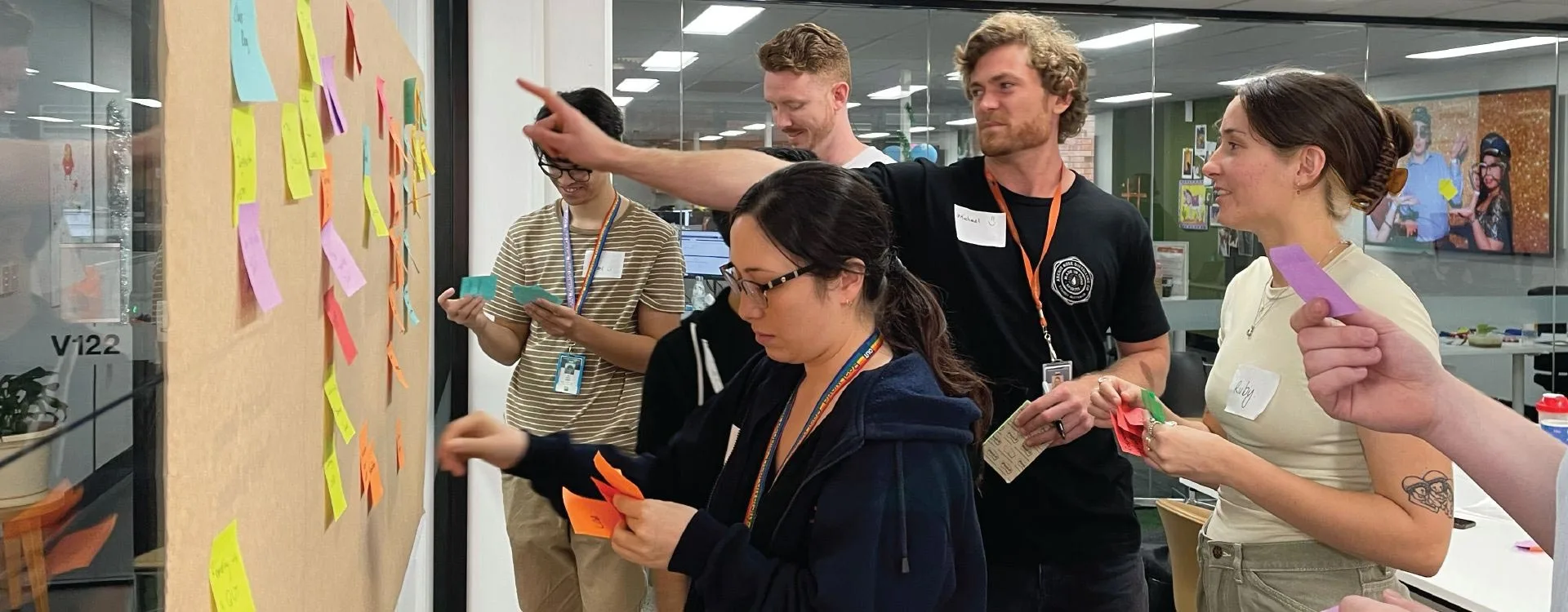
Length
4 min read
When is a designer more than just a designer? When they’re a human-centred designer. And especially when they’re working within a complex service system that’s tackling or responding to a social issue.
As social issues become more complex and interconnected, so do the systems we rely on. The designer must do more than just come into a project and interview users, design the screens or project artefacts and leave. To achieve lasting change, the designer needs to use their role to guide the organisation/s they’re working with towards becoming customer centred. They must be instrumental in breaking down silos within organisations, creating networks and building a shared story around user insights.
A human-centred designer must be a facilitator, a storyteller and a conduit between users and service providers.
You may have noticed how complex today’s service systems have become. Service systems now commonly involve complex organisational networks and layers of technology, people, and information. Multiple organisations and actors are often involved in delivering a single service or forming part of an interconnected ecosystem that supports a specific need (for example, the many players that respond during a local disaster).
The definition of ‘value’ has also evolved. It’s no longer just about the outcome of the service but the customer’s experience using the system itself. Many factors can influence this experience, including a customer’s cultural, social, and financial context.
Human-centered designers have long acknowledged the significance of the social context while focusing on usability and the user’s emotional needs as they navigate such systems.
In doing so, the human-centred designer naturally finds themselves as an intermediary between the customer and the broader ecosystem.
This will often lead them to assume the role of the project’s chief storyteller, as they use their insights to share the human impact of a project time and time again. Naturally, many of these conversations will lead to networking between organisations and the potential for innovation, collaboration and a new way of thinking about various social problems.
The best way to see the human-centred designer is as your project’s driver or ‘north star’.
Armed with both the insights of the customer and the needs of the organisations that make up the service ecosystem, the designer can see the bigger picture and keep a project on track. Significantly, they can help shape organisational strategy, driving customer-centric approaches within and across organisations. These strategies are most likely to deliver better people-centred social outcomes.
This is a role that may also continue after an engagement is complete. In some projects we work on, our designers play an ongoing role in fostering action and engagement with key players in the service system. That might be through facilitating ongoing workshops or participating in working groups. This involvement helps to develop value past the project’s life and create the conditions for lasting change.
To solve complex problems, we need collaboration, and the best way to collaborate is to unite people through the human-centred design process. Trust your designer to lead the way, and you’ll get more than just a product (or a design solution); you may get a whole new way of thinking about the world.
